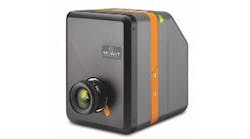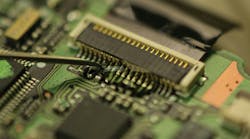Date Announced: 21 Oct 2009 LED technology has rapidly evolved over the last ten years. Because LED bulbs now have high power and warm white options, a focus has shifted toward dimmability. This transition proves pivotal for residential and business acceptance of LED lighting. Can LED lights dim? Has the LED technology advanced enough, or do most consumers need to wait a few more years for the next LED lighting revolution? Dimmable LED lighting provides an affordable, efficient, high quality lighting option on standard dimmers. LED lighting requires constant DC voltage or current to easily adapt to different power supplies safely while having longer standby power. Each LED needs 2-4V of DC power and several hundred mA of current. Having a series of LED diodes on a bulb or light fixture requires higher voltage, provided by the LED driver. An LED driver is a self-contained power supply that has output matched to the electrical characteristics of your LED or array of LEDs. It converts incoming voltage to the proper low-voltage DC power required by the LEDs. Drivers should deliver a consistent current over a range of load voltages. LEDs must be protected from line-voltage fluctuations because changes in voltage can produce a disproportional change in current, which in turn changes light output. LED light output is proportional to current and is rated for a current range. If current exceeds the manufacturer recommendations, the LEDs can become brighter but their light output can degrade at a faster rate due to heat, shortening useful life. The LED driver regulates the current flowing through the LED during operation and protects it from voltage fluctuations. Dimming drivers can dim LEDs by a reduction in the forward current, pulse width modulation (PWM) via digital control, or more sophisticated methods. LED drivers are the crucial component in dimming technology for LED lighting solutions. Most dimming drivers operate using the PWM method. With this method, the frequency could range from a hundred modulations per second to as high as hundreds of thousands of modulations per second, so that the LED appears to be continuously lighted without flicker. A benefit of the PWM method is that it enables dimming with minimal color shift in the LED output. Dimming causes LEDs to experience a similar shift in spectral power distribution as an incandescent lamp. Pulse width modulation presents a technique to safely dim an LED from 5% to 100% of full luminous flux. When the LED is pulsed with current while varying the duty cycle of the current waveform, the LED rapidly transitions between on and off. The relative times spent give the impression of being dimmed. Dimming design is based on technology of frequency and peak current modulation, which provides even and stable dimming. This technique is common for dimmable lights, especially incandescent. Dimming does not result in a loss of efficiency. During dimming, the LEDs are still operated at the same voltage and current as during full light output. In addition, lamp life is not affected by dimming, as is sometimes the case with frequently dimmed fluorescent lighting. Most LED drivers are compatible with commercially available 0-10V control devices and systems such as occupancy sensors, photocells, wallbox dimmers, remote controls, architectural and theatrical controls, and building and lighting automation systems. In the USA, most dimmers work on the basis of the TRIAC technology. Many LED drivers are tested and designed to work on these dimmer options. LEDs can also work with devices governed by the DMX and digital addressable lighting interface (DALI) protocols and, in the future, may include wireless (RF) as a control option. The technology behind LED lighting continues to evolve and progress. The LED drivers dim LEDs by a reduction in the forward current via pulse control or through digital control. Most LED drivers are compatible with commercially available 0-10V control devices and systems such as occupancy sensors, photocells, wallbox dimmers, remote controls, architectural and theatrical controls, and building and lighting automation systems. Dimming compatible LED bulbs has no negative results on LED life. Dimmable LED lighting provides an affordable, efficient, high-quality lighting option on standard dimmers.
Contact
Green Lighting LED 130 W 8th Street Erie, PA 16501 www.GreenLightingLED.com
E-mail:[email protected]




